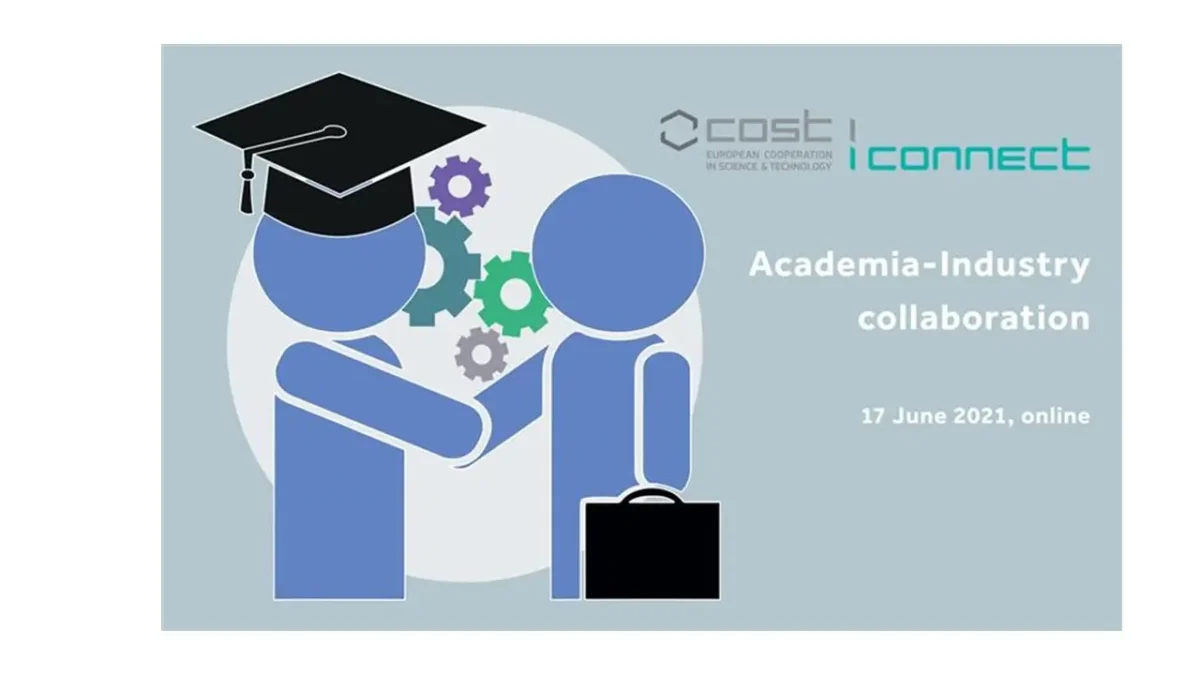Bringing together the worlds of Academia and Industry to work on common grounds is crucial to answer current societal challenges. On 17 June, an online COST Connect on Academia and Industry cooperation within COST Actions reunited more than 20 COST Actions and was the occasion for them to address the complex interactions between these apparent two different universes. The event’s purpose was also to achieve a common understanding of the academia-industry dynamic within COST Actions.
Relations between Academia and Industry
With different rules, a different set of minds and different objectives, Academia and Industry seem very contrasted and finding a common understanding when working together is fundamental. Stakes are high as society increasingly requires more cooperation between those two worlds to answer some of the most pressing challenges of our time, such as climate change, Covid-19 and many others.
Concretely, very few organisations have the internal capacity to deliver results on their own and, on the other hand, researchers do not easily get chances to test and work with day-to-day applications. Interactions between the two are complex and require careful management on both sides, especially on topics like intellectual property (IP), knowledge transfer or public Research & Innovation funding. In this context, COST Action networks are providing a place where Academia and Industry can meet to discuss and to share knowledge and experience.
Today’s COST Connect, by gathering people with both academia and industry backgrounds, and for the first time only opened to COST Actions’ participants, set the basis for the production of a report highlighting the best collaboration practices within Actions.

Increasing Academia and Industry cooperation
The objective of this event was to provide answers to the needs of COST Actions participants as well as to better understand the motivation of non-academic partners when joining an Action. As pointed out by Mickael Pero, Science Officer at COST, “there is a whole set of reasons for the Industry to be joining Actions: finding potential partners, staying up to date with the most recent research and emerging topics, or finding news research partners or colleagues”. Of course, Actions benefit as well from Industry partners. For instance, it increases their chances of receiving European-level grants.
After the introduction of Prof. Ronald de Bruin, Director of the COST Association, different speakers from COST Actions shared their experience with private partners and gave examples of solutions implemented to better include Industry in on-going discussions: for example, working groups dedicated to Industry, or the establishment of an Industrial Committee composed only of Industry leaders. Some successful Industry and Academia cooperation include companies such as IBM or EDF when the first contact was made through Short-Term Scientific Missions (STSM).
During breakout sessions, the COST Connect participants were invited to reflect on different topics such as synergies between the Industry and Academia and challenges faced by Actions in that regard, the impact of private partners’ participation and the sort of support that the COST Association can provide. During interactive discussions, COST Action participants addressed the barriers they often encounter, for example with Intellectual Property rights in competitive sectors or the importance the Return On Investment (ROI) expected by Industry, even when dealing with research and research networking.
If adjustments are often made due to the different ways of working, everyone agreed that benefits are mutual and even crucial to advance research and innovation. COST Networking tools, in particular STSMs, were pointed out as important assets to develop mutual collaboration. The COST Connect participants also stressed out that the COVID-19 pandemic has impacted their research and activities, thus taking a toll on cooperation with industrial partners. COST wants to overcome this burden, as it has developed Virtual Networking Tools, offering virtual mobility grants for COST Action participants.
The COST Connect ended with a Q&A session.
Speakers
Prof Jacek RAK, Chair of Action “Resilient communication services protecting end-user applications from disaster-based failures (RECODIS)”
Andreia F. SOUSA , chair of action “European network of FURan based chemicals and materials FOR a Sustainable development”
Chiara Pernechele, Vice Chair of Action “High-performance Carbon-based composites with Smart properties for Advanced Sensing Applications”
Mathias Staudigl, Chair of Action “European Network for Game Theory”
Further reading
